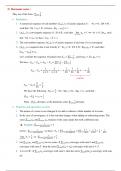Summary
Summary Harmonics_Series_Licence_3_Mathematics
- Course
- Institution
Notes and course summaries on harmonic series, all the rules and theorems you need to solve your exercises. The document is in English that is easy to read and understand.
[Show more]



